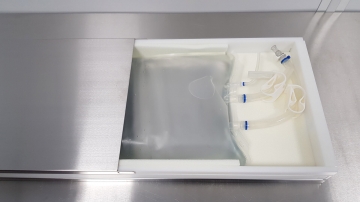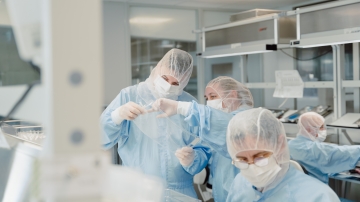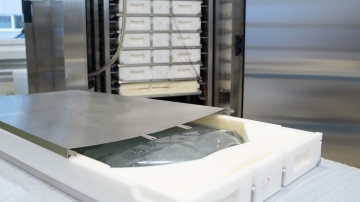Blocking UV Light from Biopharmaceuticals
Table of contents
ShowShedding UV light on single-use bags
The biopharmaceutical manufacturing sector is undergoing rapid transformation, with single-use technology becoming a fundamental aspect of efficient and safe production. Among the various components utilized in this process, single-use bioprocess containers are crucial.
New on the market are those that are designed to block ultraviolet (UV) light, which promise to safeguard sensitive biopharmaceutical products from the harmful effects of ultraviolet radiation during both storage and processing. Exposure to UV light can lead to degradation of some biologics. This degradation can result in reduced efficacy and potential safety concerns. By utilizing cold chain packagings that effectively block UV light, manufacturers can maintain the integrity and quality of their products throughout the entire bioprocessing chain.
This article will help you understand when to consider UV-protective single-use bags, their benefits and how they contribute to the overall success of production processes.
What are UV-sensitive biopharmaceutical products?
The sensitivity of biopharmaceuticals to UV light can vary based on their chemical structure, formulation, and packaging. Here are some common products known for their UV light sensitivity:
- Monoclonal Antibodies (mAbs): These therapeutic agents are particularly vulnerable to UV light, which can cause structural changes and aggregation. Such alterations can compromise the integrity of mAbs, leading to decreased efficacy and safety concerns. [1]
- Recombinant Proteins: Like mAbs, recombinant proteins are also prone to denaturation and loss of biological activity when exposed to UV light. Their specific amino acid composition and structural characteristics make them susceptible to photodegradation. [2]
- Viral Clearance Products: In processes that involve viral inactivation, UV light is sometimes used to eliminate unwanted agents. However, the UV sensitivity of the target viruses must be carefully managed, as overexposure can damage both the viral particles and the biopharmaceutical product itself. [3]
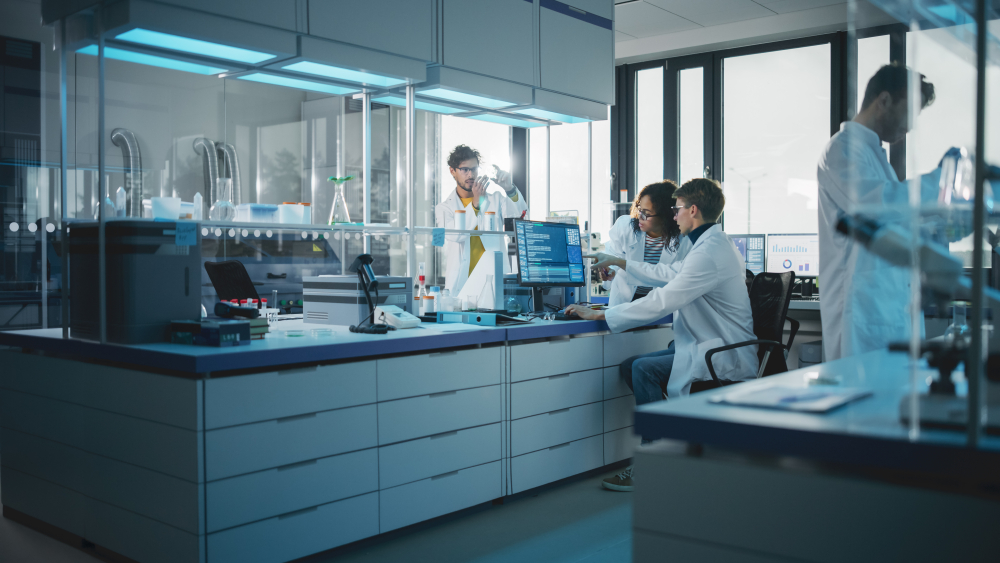
UV light exposure during biopharmaceutical manufacturing
Biopharmaceuticals can encounter UV light at various stages throughout their lifecycle, including manufacturing, storage, transportation, and administration. Here are some scenarios where exposure may occur:
- Manufacturing and Processing: Certain steps in the production of biopharmaceuticals may involve UV light exposure. For instance, UV light can be used for sterilizing equipment and surfaces in cleanrooms or for inactivating viruses and bacteria during the manufacturing process.
- Packaging and Storage: If biopharmaceutical products are not adequately protected, they may be exposed to UV light during packaging and storage. Products that are improperly stored or packaged in transparent containers are particularly at risk, especially if they are kept in areas with direct sunlight or artificial UV sources.
- Transportation: During transport from manufacturing facilities to distribution centers or pharmacies, biopharmaceuticals may be exposed to UV light if they are not properly packaged. This exposure can happen during transit in trucks, planes, or other vehicles, particularly if the packaging lacks sufficient UV protection.
- Handling and Administration: Healthcare providers or patients may inadvertently expose biopharmaceutical products to UV light during handling and administration. For example, if a vial or syringe is left in direct sunlight or under UV lamps during preparation, it may suffer from UV exposure.
How can pharmaceuticals be protected from UV light?
There are novel single-use bag films that effectively protect the media or drug product inside from UV light. [4] A multilayered polyethylene film is used to enable blockage of both UVA and UVB wavelengths, ensuring that sensitive biopharmaceuticals remain safe from potential UV damage. Available in different sizes from small 100 ml sample bags to larger 2D bags for commercial production, can be applied in different single-use biomanufacturing processes.
Single Use Support’s RoSS® shell can safely protect such UV-single-use bags during cold chain applications in all sizes. A protective secondary packaging as such helps to
- Reduce bag breakages
- Standardize fluid and cold chain management of single-use bags
- Maintain product quality during freezing/thawing processes including cold chain storage and cold chain shipping
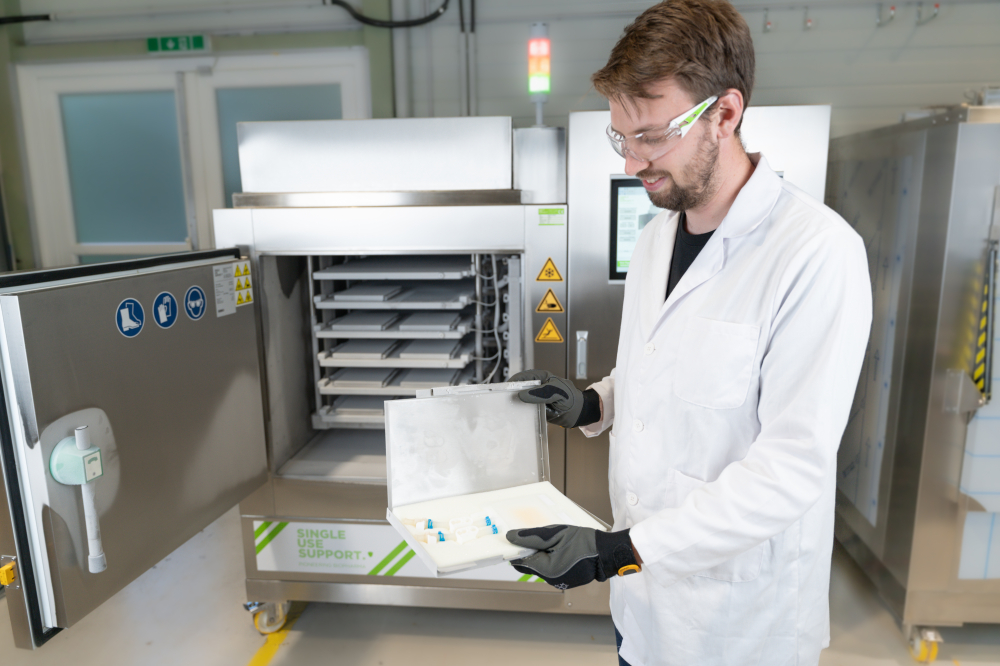
Single Use Support’s tamper-evident secondary packaging solutions hinders UV light from reaching the single-use bag. RoSS.KSET is an example of a stainless steel packaging solution that blocks UV light itself due to its UV permeability. It is designed to protect small single-use bags below 250mL to reduce product loss and maintain quality during cold chain applications.
By combining UV-blocking bag films with protective secondary packaging, biopharmaceutical manufacturers can ensure comprehensive protection for their sensitive products throughout the manufacturing process, storage, and transportation. This layered approach is essential for maintaining product integrity, minimizing degradation, and ensuring the safety and efficacy of biopharmaceuticals.
Solution Overview to Protect Drugs from UV
References
- Du Cheng et al. (2018). "Protection of therapeutic antibodies from visible light induced degradation: Use safe light in manufacturing and storage." European Journal of Pharmaceutics and Biopharmaceutics
- Kim Jennifer J. et al. (2023). "Trends in Light and Temperature Sensitivity Recommendations among Licensed Biotechnology Drug Products." The AAPS Journal.
- Meunier Sarah M. et al. (2017). "Evaluating ultraviolet sensitivity of adventitious agents in biopharmaceutical manufacturing." Journal of Industrial Microbiology & Biotechnology
- MDI (2024). "MDI launches Novel UV Light Blocking Single-Use Bag FIlm". Available at: www.ccubedbiotech.com/news/2024/1/26/mdi-launches-novel-uv-light-blocking-single-use-bag










